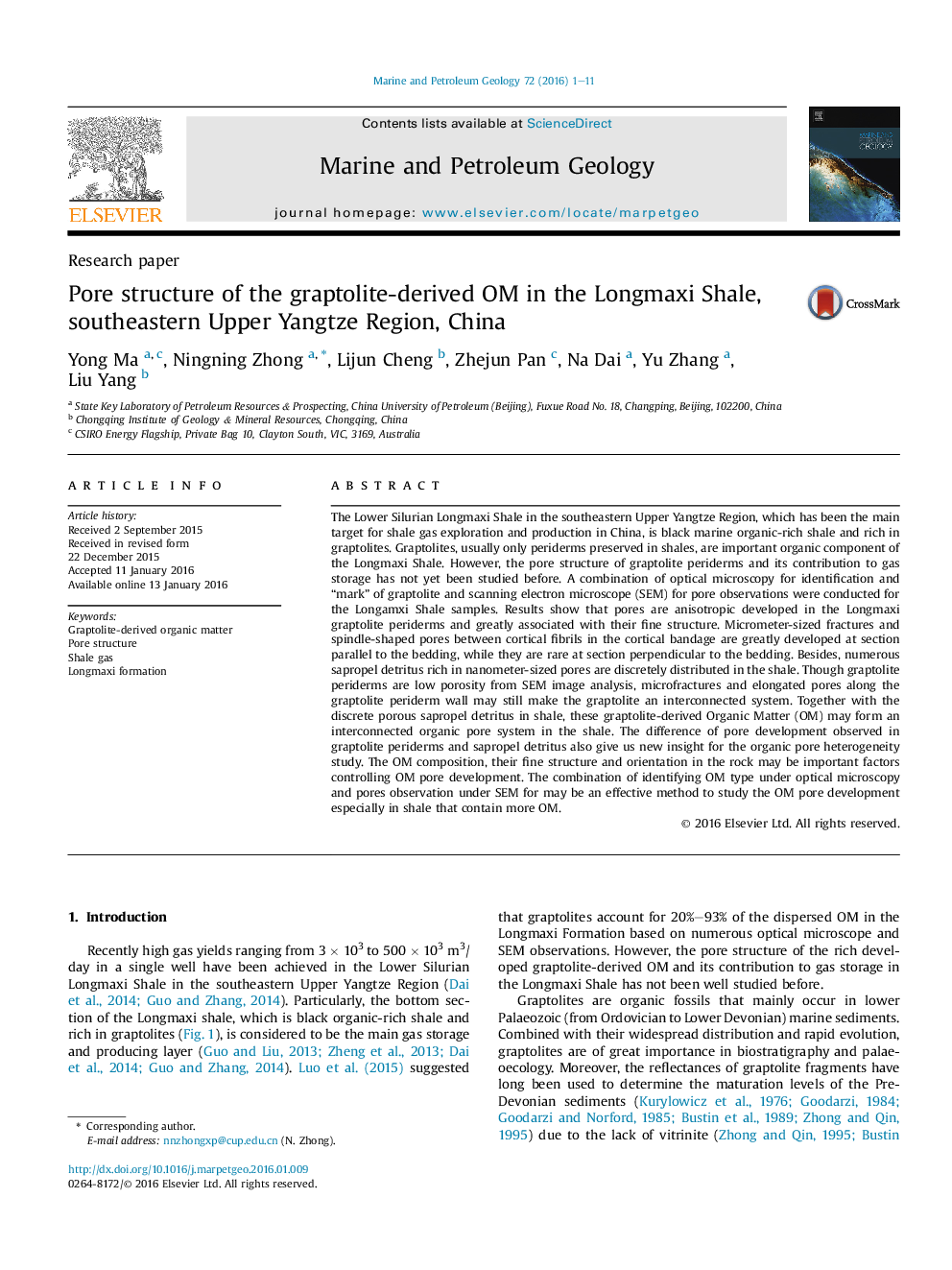| Article ID | Journal | Published Year | Pages | File Type |
|---|---|---|---|---|
| 6434471 | Marine and Petroleum Geology | 2016 | 11 Pages |
â¢Pores in graptolite periderms are greatly associated with their fine structure.â¢Pores are greatly developed in the discrete sapropel detritus.â¢Graptolite periderms and porous sapropel detritus form a connected OM pore system.â¢Provide new insights for OM pore heterogeneity study.
The Lower Silurian Longmaxi Shale in the southeastern Upper Yangtze Region, which has been the main target for shale gas exploration and production in China, is black marine organic-rich shale and rich in graptolites. Graptolites, usually only periderms preserved in shales, are important organic component of the Longmaxi Shale. However, the pore structure of graptolite periderms and its contribution to gas storage has not yet been studied before. A combination of optical microscopy for identification and “mark” of graptolite and scanning electron microscope (SEM) for pore observations were conducted for the Longamxi Shale samples. Results show that pores are anisotropic developed in the Longmaxi graptolite periderms and greatly associated with their fine structure. Micrometer-sized fractures and spindle-shaped pores between cortical fibrils in the cortical bandage are greatly developed at section parallel to the bedding, while they are rare at section perpendicular to the bedding. Besides, numerous sapropel detritus rich in nanometer-sized pores are discretely distributed in the shale. Though graptolite periderms are low porosity from SEM image analysis, microfractures and elongated pores along the graptolite periderm wall may still make the graptolite an interconnected system. Together with the discrete porous sapropel detritus in shale, these graptolite-derived Organic Matter (OM) may form an interconnected organic pore system in the shale. The difference of pore development observed in graptolite periderms and sapropel detritus also give us new insight for the organic pore heterogeneity study. The OM composition, their fine structure and orientation in the rock may be important factors controlling OM pore development. The combination of identifying OM type under optical microscopy and pores observation under SEM for may be an effective method to study the OM pore development especially in shale that contain more OM.
